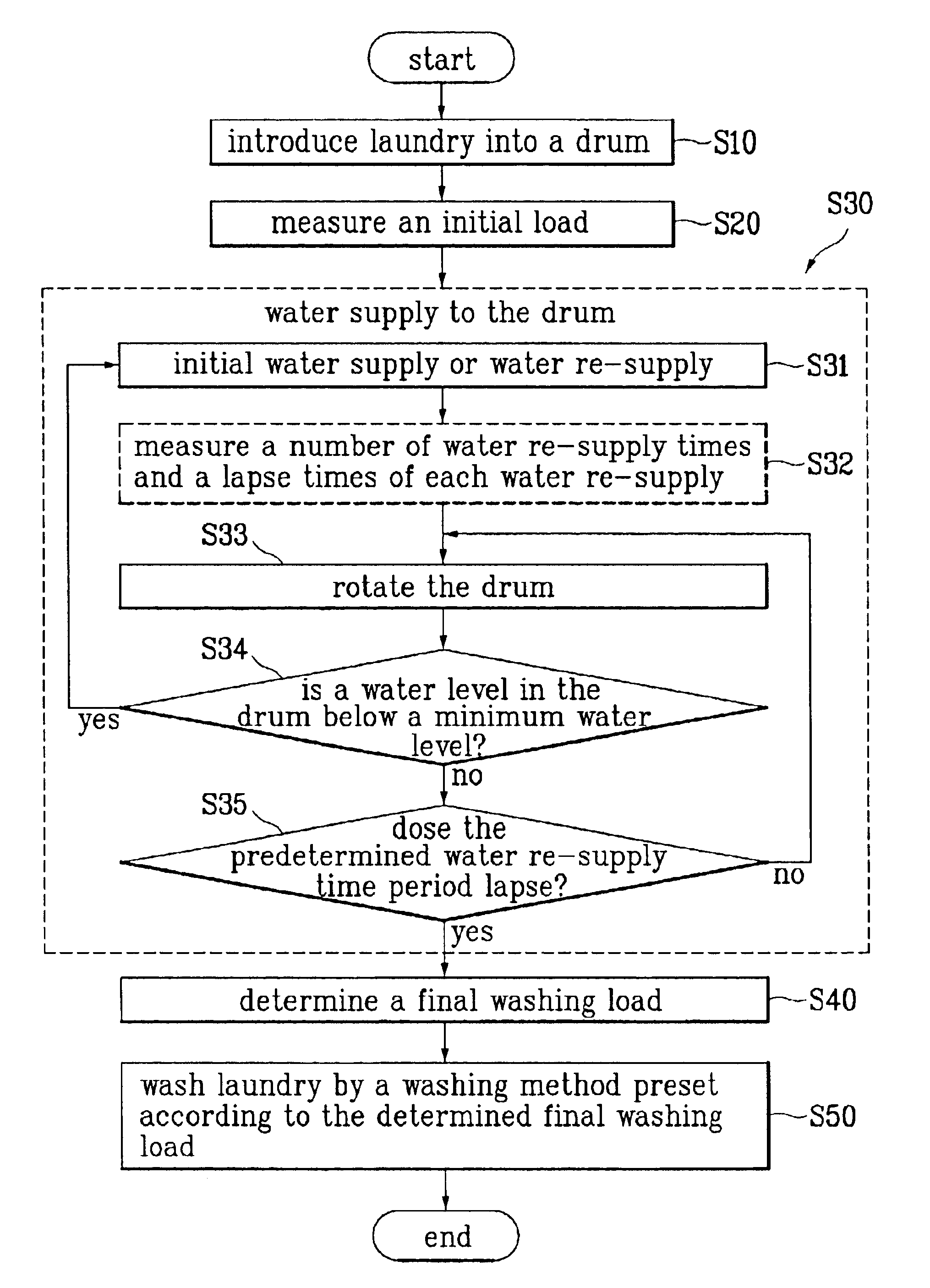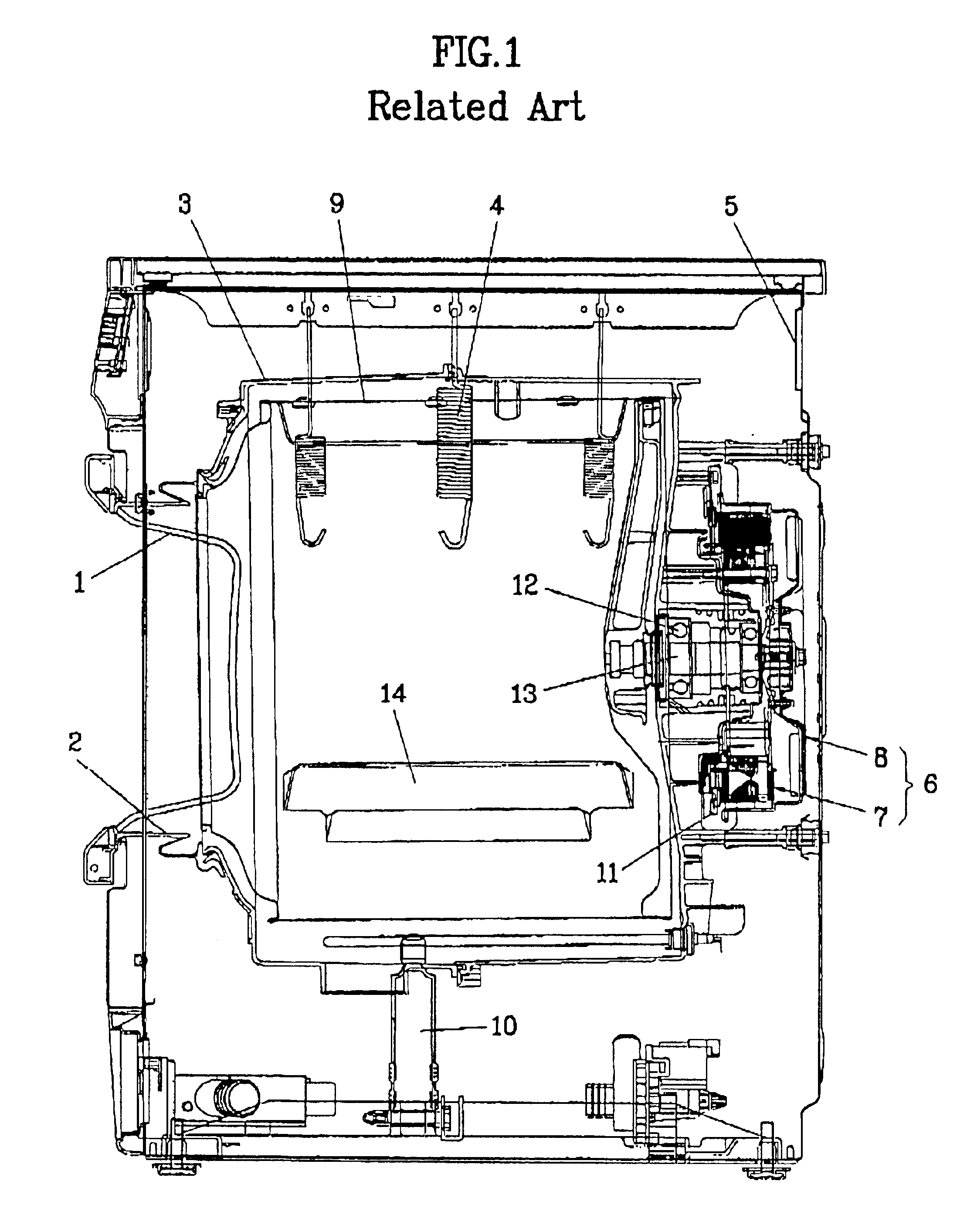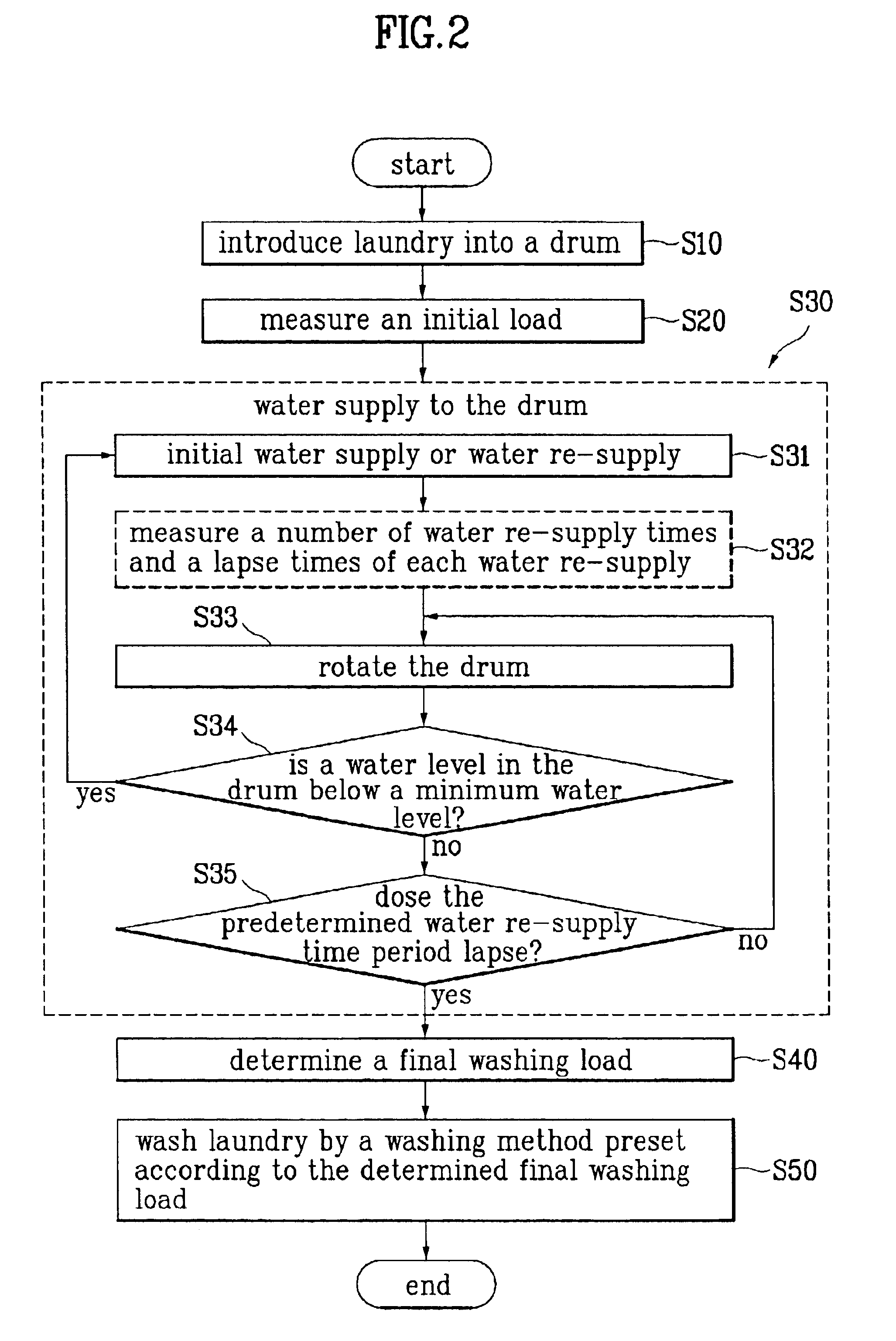Method for controlling washing in washing machine
a technology for washing machines and motors, applied in other washing machines, sustainable buildings, textiles and papermaking, etc., can solve the problems of reduced life of motors, inaccurate detection of final washing loads, and elevation of temperatures, so as to improve washing performance and prevent overload of motors
- Summary
- Abstract
- Description
- Claims
- Application Information
AI Technical Summary
Benefits of technology
Problems solved by technology
Method used
Image
Examples
Embodiment Construction
Reference will now be made in detail to an embodiment of the present invention, example of which is illustrated in the accompanying drawings.
FIG. 2 illustrates a flow chart showing the steps of a method for controlling washing in accordance with embodiment of the present invention. FIG. 3 illustrates a flow chart showing the sub-steps for determining a final washing load in the method for controlling washing in accordance with the present invention.
At first, a predetermined amount of laundry is introduced into a washing drum for washing in the washing machine (S10). Typically, the laundry includes different types of fabric, such as cotton fabric and wool fabric. Moreover, states of each of the fabrics (for an example, the fabric is wet or dry) also differ.
When a user puts the washing machine into operation after the laundry is introduced, a series of washing steps are started by a controller in the washing machine. At first, the washing machine measures an initial washing load in th...
PUM
 Login to View More
Login to View More Abstract
Description
Claims
Application Information
 Login to View More
Login to View More - R&D
- Intellectual Property
- Life Sciences
- Materials
- Tech Scout
- Unparalleled Data Quality
- Higher Quality Content
- 60% Fewer Hallucinations
Browse by: Latest US Patents, China's latest patents, Technical Efficacy Thesaurus, Application Domain, Technology Topic, Popular Technical Reports.
© 2025 PatSnap. All rights reserved.Legal|Privacy policy|Modern Slavery Act Transparency Statement|Sitemap|About US| Contact US: help@patsnap.com



